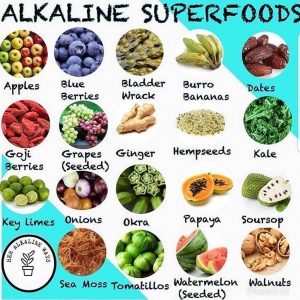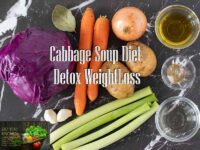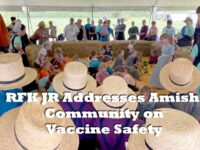Dr. Sebi and Dr. Gundry Food NO NO List: Foods
you should never Consume
For decades, the health food industry fooled you into eating special “diet” food products that are actually loaded with sugar. They advocated for you to add dangerous lectin-filled foods to your diet and even told you to pursue a “low-fat” (albeit heavily processed) diet. And you felt good because you were doing what you thought you had to in order to make “nutritious choices”.
KETO Diet Intermittent Fasting Weight Loss
However, doctors and researchers have now discovered those choices were anything but healthy. Dr. Gundry was among the first to lead the charge of busting health myths wide open.
Dr. Gundry came to realize that even “healthy” choices like fruits and vegetables can take a toll on your body. While some nutritionists would have you feast on high sugar fruits, Dr. Gundry knew that was a bogus attempt at a so-called better diet. The truth is… plants do not want to be eaten.
What they really want is to survive. And the most effective way for them to defend themselves against hungry predators like humans is by producing toxic chemical proteins called lectins.
WHY ARE LECTINS BAD FOR YOU?
You’ve likely heard people mention the popular lectin, gluten – it’s one of the most common lectins out there. But it’s not the only one. In fact, lots of the “healthy” foods you’ve been trained to eat for centuries are still full of dangerous lectins, including foods labeled as “gluten-free”.
Humans can’t digest lectins.
So, when you choose categories of foods to consume that are high in lectins — like nightshade vegetables, for example — they make it all the way through your gut unchanged. During the digestive process, some types of lectins might even bind to the cell membranes that run along the wall of your small intestine.
This process allows lectins to communicate with the cells, triggering a response from your body. Regardless of any preexisting health conditions, your body’s response may include something like:
- Nausea
- Diarrhea
- Vomiting
- Upset stomach
- Bloating and gas
- Weight gain2,3,4
Of course, all bodies are different. But people who eat a lot of raw, lectin-rich foods (like raw beans, raw kidney beans, lentils, and nightshades) may be more likely to develop such symptoms.
Depending on the type of lectin, they may also interfere with human health in other ways. They might interrupt the absorption of vitamins and minerals in your body. Because of this, lectins are often called “anti-nutrients.
Some people are more sensitive to lectins than other people. Again, everyone’s body is different. But if you have experienced digestive issues for some time or you suffer from an autoimmune condition, you could be even more sensitive to lectins.
WHAT ARE THE MOST HARMFUL LECTINS?
Phytohaemagglutinin:
Phytohaemagglutinin is the lectin in red kidney beans. It happens to be pretty toxic. Phytohaemagglutinin is the culprit behind red kidney bean poisoning. This type of poisoning is the result of eating undercooked or raw kidney beans. According to the FDA, eating just four raw kidney beans may cause symptoms of severe nausea, vomiting, and diarrhea.7
Wheat Germ Agglutinin (WGA)
Another dangerous lectin is WGA — the lectin found in wheat products. WGA basically mimics insulin. Therefore, it can block your body’s insulin receptors. Unfortunately, that may lead to decreased muscle mass and feelings of hunger.
FOODS HIGH IN LECTINS INCLUDE:
- Certain vegetables, especially nightshades such as tomatoes, potatoes, and eggplant
- Certain nuts and seeds including cashews, peanuts, pumpkin, and sunflower seeds
- Grain-fed and farm-raised animal proteins
- Beans and legumes
- A1 dairy products
To make things easier, Dr. Gundry has put together a few different tools to help you to stick to a lectin-free diet. One such tool is Dr. Gundry’s comprehensive list of foods to eat and foods to avoid.
HOW TO REDUCE LECTINS IN YOUR FAVORITE FOODS
 You will want to avoid high lectin foods every single day. However, if a special occasion is on the horizon and you know you will have to prepare lectin-rich foods, these strategies could help you reduce the lectin content in your food.
You will want to avoid high lectin foods every single day. However, if a special occasion is on the horizon and you know you will have to prepare lectin-rich foods, these strategies could help you reduce the lectin content in your food.
- Soak — Soaking your legumes and grains may help reduce the content of their plant lectins. Soak them overnight, and rinse them well before you start cooking.
- Pressure-cooking — If your recipe calls for beans, potatoes, or tomatoes, the best way to prep them is in the pressure cooker. A pressure cooker won’t get rid of all the lectins, but it may help significantly reduce the lectins in your food.
- Peel and De-seed — High-lectin foods like squash, cucumber, eggplant, and tomatoes can be easier on your body if you eliminate the skin and seeds. Peel the skin off your high-lectin fruits and veggies, and take out as many of the seeds as you can.
- Fermentation — When you ferment vegetables, fruits, and even legumes, you allow good bacteria to get in there and break down some of the plant’s defenses. While fermenting your food won’t kill all the lectins, it may help significantly reduce them.
FOODS TO EAT EVERY DAY ON THE GUNDRY MD DIET
Avocados
Avocados have got a whopping 10.5 grams of fiber per cup plus lots of vitamin C, E, and potassium. And, they’re full of folate.
They are also full of amazing fatty acids that can do wonders for your health. These fats can support your skin’s natural oil barrier and help protect your skin from harmful UV rays.
The healthy fats in avocados can also support a healthy weight and heart.
Walnuts, Macadamia Nuts, Or Pistachios
Here’s a secret: Some “nuts” are really just seeds. Cashews, for instance, are seeds and they’re also full of lectins. And peanuts are actually legumes. Of course, legumes are lectin bombs, so you’ve got to stay away from them.
But real nuts – like walnuts, macadamia nuts, and pistachios – can do great things for your health. In fact, nuts can help support a healthy heart and blood pressure.
21 day mucusless diet be Disease Free






